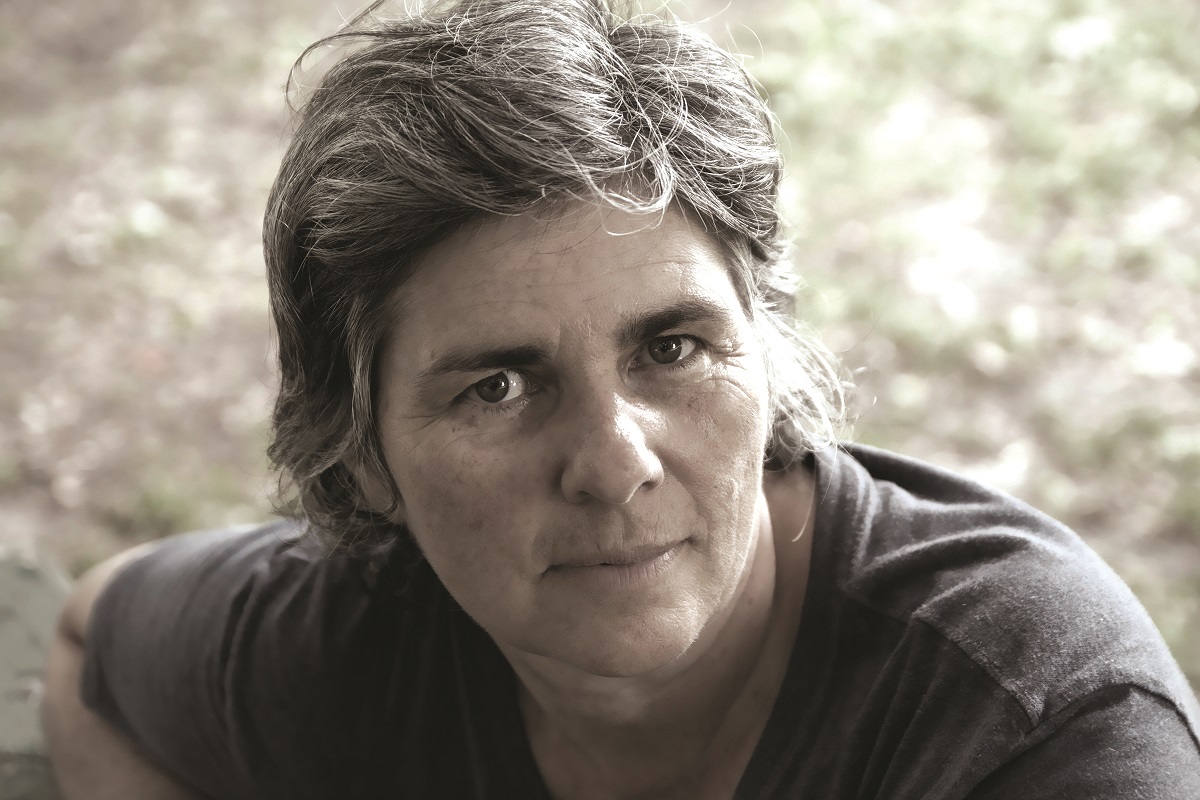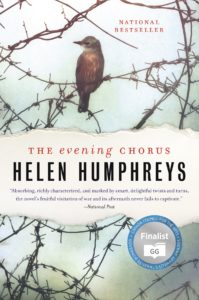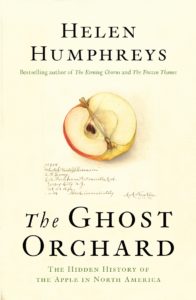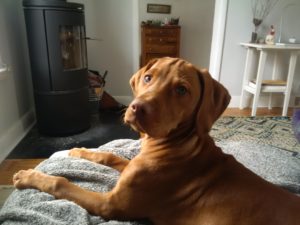By Iris Winston
Dogs and writing have been at the heart of the life of acclaimed Canadian author Helen Humphreys for as long as she can remember.

She recalls that, as a small child, she treated her family’s 150-pound St. Bernard, Lisa, as a third parent. Instead of waking either human parent early, she would “go downstairs to the living room, where Lisa slept on a sheepskin rug in front of the fireplace,” she writes in her memoir And a Dog Called Fig. “I would lie up against her belly—I remember that I fit exactly between her two sets of paws.”
As Lisa was the starting point for Helen’s lifelong love of dogs, so reading was the beginning of her journey as a writer.
 “I loved the world of books and it was reading that made me want to be a writer,” she says, adding in her memoir, “Of course, I had no idea what being a writer would entail. I was a child when I made that life-directing decision.”
“I loved the world of books and it was reading that made me want to be a writer,” she says, adding in her memoir, “Of course, I had no idea what being a writer would entail. I was a child when I made that life-directing decision.”
She muses about whether she would have fulfilled that early dream had one of her elementary school teachers not praised her work and encouraged her to keep writing. By the time she was in her teens, she was “writing seriously all the time, spurred on by the odd poem being published in the odd little magazine.” Then she lived with her grandmother in England for a year, completing her first novel while she was there.
“It wasn’t very good and never saw the light of day,” says Helen, “but what I did learn from writing it was the discipline required to be a writer. That was a valuable lesson.”
She returned to Canada, still considering her next steps. “Should I go to university and study English, which would allow me to keep reading and perhaps give me access to other like-minded people? Or should I just work at whatever job I could get, because this would give me experiences, which I knew were important in terms of giving me something to write about?”
Recognizing she functioned more effectively as an independent learner than in a regular class, she chose to stay in the “real world” rather than attend one of the universities to which she had been accepted.
 “I wasn’t a great student in a traditional classroom,” she admits. “I didn’t like authority. So, I didn’t do as well in high school as I did in alternative school, where I finished early. The emphasis on independent study suited me.”
“I wasn’t a great student in a traditional classroom,” she admits. “I didn’t like authority. So, I didn’t do as well in high school as I did in alternative school, where I finished early. The emphasis on independent study suited me.”
That settled, she looked for jobs, such as pumping gas, where it was possible to read and write between tasks at work.
“Writers need to read,” she emphasizes, noting that she set out to start at A and work her way through the alphabet of authors. “I skipped to W at one point because I wanted to read books by Virginia Woolf.”
In the early part of her writing career, Helen wrote poetry exclusively, eventually having four books of poetry published, the first when she was 25.
“I still write the occasional poem,” says Helen, who was the poet laureate for the City of Kingston from 2014 to 2018. That position required a minimum of one original poem a year. However, she notes, “My writing has evolved into longer fiction. In many ways, poetry’s more satisfying because you write something small and then you can move onto something else. It doesn’t interfere in your life the way a novel or anything long-form does. Short pieces don’t require the same level of involvement because they end more quickly, whereas the tedium of a novel goes on and on. But there’s great joy in writing when working out an idea and following it through.”
Now with nine novels, many of them major award winners, as well as several non-fiction works in print and translated into numerous languages, she continues to build an impressive list of publications. Her debut novel, Leaving Earth, won the City of Toronto Book Award in 1997. Afterimage, published in 2000, won the Rogers Writers’ Trust Fiction prize and a Lambda prize for fiction. Her most recent novel, Rabbit Foot Bill, was a national bestseller.

“I write fairly quickly,” says Helen, who has just completed the first draft of her next novel. “But I research for a long time and often rewrite. My first draft normally takes about three months, but the whole process with editing and rewriting usually takes about two years from beginning to end.”
Always, there is a canine companion by her side. From Lisa, the dog of her early childhood, to Timmy, a long-haired dachshund, followed by her father’s golden retrievers and then her own vizslas, dogs continue to bring her joy and comfort. Vizslas—known to be a very energetic Hungarian hunting breed— have been part of her life for the last 25 years
“The emotional connection and closeness with a dog grow over time,” she says. “At a certain point the dog knows your life well enough to fit in. I’m much healthier and happier having a dog with me while I’m writing. It’s so much less lonely. It simply makes all the difference having the dog there.”
“Dogs interrupt your life in a way that keeps things fresh and lively,” she adds. “Walking with a dog refreshes you and you come back to the writing differently afterwards.”

Fig, now four, has been particularly energetic. “She was a very difficult puppy,” recalls Helen, adding that it was not just that more than a decade had passed since she had been immersed in the whirlwind of puppydom. Figgy’s early adventures included jumping out of a moving car while tethered to her harness and unzipping a tent flap to go for a late-night wander on a camping trip. She and Helen survived both adventures unscathed, but her busy style left Helen with little time for writing until the exuberant youngster became more mature.
Today, as an adjunct professor at Queen’s University, Helen teaches some classes in creative writing and mentors beginning writers.
“I really enjoy the classes,” she says. “I love seeing writers at the beginning and find it exciting to see the new generation with a passion for writing. Because I didn’t go to school, I didn’t have anybody to guide me and I hope I’m able to give them something useful.” Undoubtedly, she would also suggest that the best way to counteract the loneliness of the writer is to have a canine companion, even one as bubbly as Fig.






